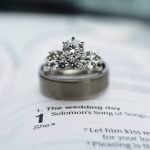Are you wondering “how long is a Catholic wedding?” Catholic weddings hold significant importance in the Catholic faith, and they are rich in traditional elements that make the ceremony special and meaningful. From pre-wedding rituals to the wedding ceremony itself, there are various aspects that contribute to the length of a Catholic wedding. In this article, we will explore the significance of Catholic weddings, the traditional elements involved, and provide insights into how long a typical Catholic wedding lasts.
Catholic weddings are steeped in tradition and hold religious significance for those who practice the faith. The ceremonies are filled with symbolic rituals and customs that have been passed down through generations, making them unique and deeply meaningful. Understanding the traditional elements involved in a Catholic wedding can help couples appreciate the sacredness of the ceremony and enhance their overall experience.
In addition to discussing the traditional components of a Catholic wedding, we will also delve into the practical aspects such as pre-wedding ceremonies, the order of events during the ceremony, and factors that can affect the duration of the wedding. If you’re preparing for a Catholic wedding or simply curious about this sacred celebration, this article will provide valuable insight into what to expect and how to plan for your special day.
Pre-Wedding Ceremonies
Engagement and Marriage Preparation
Before the actual wedding ceremony takes place, there are several pre-wedding rituals and preparations in a Catholic wedding. One of the first steps is the engagement, where the couple announces their intention to marry. Following this, they typically participate in a marriage preparation process, which involves meeting with a priest or deacon for counseling and guidance.
Rehearsal Dinner
Another important pre-wedding ceremony in a Catholic wedding is the rehearsal dinner. This event usually takes place the night before the wedding and provides an opportunity for the couple, their families, and bridal party to gather together for a meal. During this time, any last-minute details or logistics for the wedding ceremony are discussed and finalized.
Prayer and Reflection
Throughout the pre-wedding process, prayer and reflection play a significant role in Catholic tradition. The couple may participate in special prayers or devotions leading up to their wedding day, seeking spiritual guidance as they prepare to enter into the sacrament of marriage.
This period of reflection helps them focus on the commitment they are about to make and seek blessings for their future together. These pre-wedding ceremonies and preparations add depth and significance to the overall Catholic wedding experience.
The Ceremony
The Catholic wedding ceremony is a sacred and cherished tradition that brings together two individuals in the presence of God and their loved ones. The solemnization of marriage in the Catholic Church is a beautiful and meaningful event, filled with rich symbolism and tradition. Understanding the order of events and the significance behind them can provide couples with a deeper appreciation for this special sacrament.
The Catholic wedding ceremony typically follows a specific order of events, each with its own symbolic meaning. Below is a brief overview of the typical order of events in a Catholic wedding ceremony:
- Procession: The ceremony begins with the entrance procession, during which the bridal party, including the bride and groom, enters the church.
- Opening Rites: The priest or deacon then welcomes the congregation and offers an opening prayer to set the tone for the ceremony.
- Liturgy of the Word: This part of the ceremony includes readings from the Bible, as well as a responsorial psalm and a Gospel reading. These readings reflect on love, commitment, and faithfulness.
- Exchange of Vows: The bride and groom then exchange their vows, promising to love and honor each other for better or for worse, in sickness and in health.
- Blessing and Exchange of Rings: The rings are blessed by the priest and then exchanged between the couple as a symbol of their commitment to one another.
- Nuptial Blessing: The priest offers a blessing over the newly married couple to ask for God’s grace upon their union.
Understanding these elements can help couples appreciate how each part contributes to the overall significance of their marriage within the Catholic faith. It’s important for couples planning a Catholic wedding to work closely with their officiant to understand how these traditions will play out in their own ceremony.
Ultimately, while there is a traditional order to follow in a Catholic wedding ceremony, it’s important for couples to incorporate elements that are personally meaningful to them. By working closely with their officiant or priest, they can ensure that their wedding reflects both their faith and personal values while honoring this sacred tradition within the Catholic Church.
Length of the Wedding
When it comes to the length of a Catholic wedding, there are several factors that can influence how long the ceremony will last. Understanding these factors can help couples and their families plan for their special day.
Order of Events
The typical duration of a Catholic wedding ceremony can range from 30 minutes to an hour, depending on the specific elements included in the service. The order of events often includes the processional, opening prayers, readings from the Bible, vows, exchange of rings, nuptial blessing, and the recessional. Each of these components contributes to the overall length of the ceremony.
Wedding Mass
One factor that can significantly impact the length of a Catholic wedding is whether or not a Mass is included in the service. A wedding Mass typically adds an additional 30 to 60 minutes to the ceremony as it involves liturgical rituals and sacraments. Couples should consider this when planning their timeline for the day.
Cultural Variations
It’s important to note that the length of a Catholic wedding can vary based on cultural traditions and regional customs. For example, in some cultures, certain rituals or ceremonies may be included in the wedding service, which could extend its duration. Understanding these cultural variations can help couples and their families prepare for what to expect on their special day.
Ultimately, when planning a Catholic wedding, couples should work closely with their officiant to create a timeline that reflects their faith and values while also considering practical considerations such as venue availability and scheduling constraints. By being mindful of these factors, couples can ensure that their Catholic wedding is meaningful and memorable while also staying on schedule.
Wedding Mass
In a Catholic wedding, the inclusion of a Mass can significantly impact the length of the ceremony. The celebration of the Eucharist adds an additional layer of significance to the wedding, as it symbolizes the couple’s commitment to their faith and to each other. The Wedding Mass typically includes readings from the Bible, prayers, hymns, and the exchange of vows and rings. All these elements contribute to a longer ceremony compared to a non-Mass wedding.
During the Wedding Mass, there are specific rituals that must be observed, such as the Liturgy of the Word and the Liturgy of the Eucharist. These rituals involve multiple components, including readings from both the Old Testament and New Testament, a homily or sermon delivered by the priest or deacon, and the consecration of bread and wine. Additionally, there may be music performances or congregational singing as part of worship during the Mass.
To ensure that everything runs smoothly, couples planning a Catholic wedding with a Mass should consult with their presiding priest or deacon on how to effectively manage time for all aspects of the ceremony. It’s essential for couples to consider how long is a Catholic wedding with a Mass when making arrangements with their chosen wedding venue in order to allow sufficient time for this sacred celebration.
- Couples should communicate with their clergy member about coordinating each element of their Wedding Mass.
- Planning ahead can help ensure that there is ample time for readings, prayers, and any additional rituals that may be included.
- Selecting appropriate hymns and music can also help maintain an atmosphere conducive to worship while keeping within a reasonable timeframe for the ceremony.
Cultural Variations
In various cultures and regions around the world, Catholic weddings differ not only in terms of traditions and customs but also in their duration. The length of a Catholic wedding can vary significantly depending on cultural norms, regional practices, and even individual preferences. Understanding these variations can help couples and their families prepare for a wedding ceremony that aligns with their cultural background and expectations.
For example, in some Latin American countries like Mexico and Colombia, Catholic weddings tend to be longer due to the incorporation of elaborate rituals and customs. This includes special dances, musical performances, and extended ceremonies at the church. On the other hand, in European countries such as Italy and Spain, Catholic weddings may be more compact and focused on the religious aspects, resulting in a relatively shorter overall duration.
In addition to cultural differences, geographical regions within the same country may also have unique wedding customs that impact the length of the ceremony. For instance, in the United States, Catholic weddings in New Orleans often feature lively processions through the streets as part of the celebration, which can add extra time to the event compared to weddings in other cities.
These cultural variations highlight the rich diversity present within the Catholic faith and how it is expressed through wedding ceremonies. Couples planning a Catholic wedding should consider these differences when organizing their special day to ensure that it reflects their cultural heritage while also respecting traditional practices.
| Cultural Variation | Duration |
|---|---|
| Latin America (e.g. Mexico) | Relatively Longer |
| Europe (e.g. Italy) | Relatively Shorter |
| New Orleans (United States) | Varies with Procession |
Tips for Planning
When it comes to planning a Catholic wedding, managing the timing and keeping the ceremony on schedule is essential. There are several key factors to consider when organizing a Catholic wedding to ensure that the event runs smoothly and stays within the desired timeframe.
One of the most important things for couples to do when planning a Catholic wedding is to work closely with their priest or deacon. These religious leaders can provide valuable insight into the timing of the ceremony and any specific requirements that need to be met. It’s crucial to have open communication with them from the early stages of planning to avoid any last-minute surprises that could affect the length of the wedding.
Another tip for keeping a Catholic wedding on schedule is to create a detailed timeline for the day. This should include all pre-wedding activities, such as getting ready, taking photographs, and transportation to the ceremony venue. Having a well-thought-out schedule can help couples and their wedding party stay organized and ensure that each part of the day runs on time.
Finally, it’s important for couples to be mindful of cultural variations that may impact how long a Catholic wedding lasts. Different regions and cultures may have specific customs or traditions that could affect the duration of the ceremony. Being aware of these differences can help couples make informed decisions about their wedding timeline.
| Tips for Planning | Offering Advice |
|---|---|
| Work closely with your priest or deacon | Create a detailed timeline for the day |
| Communicate openly from early stages | Be mindful of cultural variations |
Conclusion
In conclusion, the length of a Catholic wedding can vary depending on several factors, such as the inclusion of a Mass, cultural traditions, and the couple’s preferences. The typical duration of a Catholic wedding ceremony is about an hour, but this can be longer if a Mass is included.
Pre-wedding rituals and preparations also play a role in shaping the overall length of the wedding day. Understanding these factors can help couples plan and manage their wedding day timeline effectively.
Regardless of its duration, a Catholic wedding holds significant importance in the Catholic faith. It is a sacred ceremony that signifies the union of two individuals under God’s blessing and the sacrament of marriage. The traditional elements and symbolism involved in a Catholic wedding serve to sanctify and solemnize the marital bond. Therefore, regardless
As couples navigate through the planning process for their Catholic wedding, they should keep in mind that cultural variations may also influence the length of the ceremony. Different regions and cultures may have specific customs or traditions that could impact the duration of the wedding day festivities. By being mindful of these variations, couples can embrace diverse practices while still honoring their faith and celebrating their love in a meaningful way.
Frequently Asked Questions
How Long Is the Average Catholic Wedding?
The length of an average Catholic wedding can vary, but they typically last between 45 minutes to an hour. This includes the processional, the ceremony itself, and the recessional.
What Are the Rules for a Catholic Wedding?
In order to have a Catholic wedding, there are certain rules that must be followed. Both parties must be baptized Christians, and permission needs to be obtained if one party is not Catholic. The ceremony also needs to take place in a Catholic church or chapel.
How Long Is a Wedding From Start to Finish?
The duration of a wedding from start to finish can range from 6-8 hours. This includes the time for hair and makeup for the bride and bridal party, getting dressed, transportation to the ceremony, the actual ceremony, pre-reception photos, reception, dinner, speeches, dancing, and any other post-wedding activities.

Welcome to my blog about home and family. This blog is a place where I will share my thoughts, ideas, and experiences related to these important topics. I am a stay-at-home mom with two young children. I hope you enjoy reading it! and may find some helpful tips and ideas that will make your home and family life even better!





